The practice of yoga brings us face to face with the extraordinary complexity of our own being.
– Sri Aurobindo (Indian philosopher)
Some things stand the test of time unscathed and relatively unchanged. A little dusting off of age, a little modernization in packaging, but overall tried, true, and enduring. Yoga is a perfect example. Centuries old and only growing in popularity, in part because it is so adaptable to the unique needs of those who practice it. Yoga for pregnancy, yoga for seniors, even yoga for anxiety and depression.
What is yoga, really? And how does configuring your body into different positions help you feel better, especially if you’re not an Olympic gymnast?
Yoga devotees say that yoga’s combination of physical movement, mindfulness, and breath eases the mind and helps release pent-up emotions. It helps you tap into inner peace and tranquility, providing a much-needed break from constant mental turmoil.
But is this enough to explain why so many people use yoga for anxiety and depression relief?
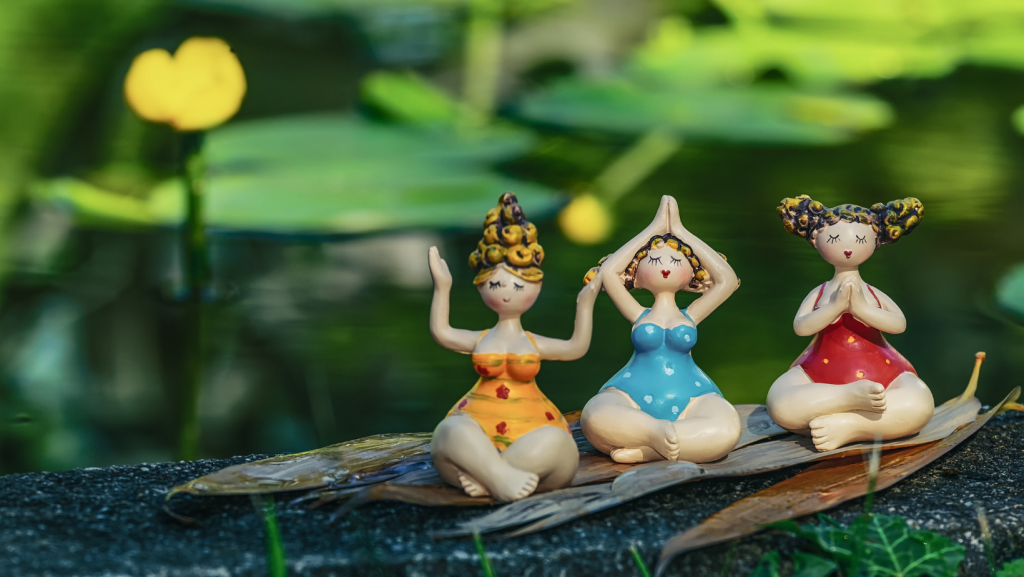
What is yoga?
It may sound woo-woo to think about yoga as a ray of light in the darkness of depression. Yet, the practice of yoga can be a game-changer if you’re suffering from depression. It can lift the veil of sadness and bring back feelings of well-being.
Because of the close relationship between anxiety and depression, it’s no surprise that yoga helps with anxiety as much as it helps with depression. Divert attention from the chronic worry and perceived danger that define anxiety, and you also set fire to the sense of failure that bridges it to depression.
No wonder so many people turn to it in times of need.
Yoga is more than doing a handstand. In fact, yoga is not really about the physical poses (“asanas” in Sanskrit).
In the words of Guru Sri Sri Ravi Shankar, practicing yoga is about “feeling the body, letting go of the effort, and experiencing the infinity.”
Say what?
Yoga has been used for centuries as a form of physical and mental exercise. More recently yoga has gained popularity as a specific way to manage symptoms of anxiety and depression.
Yoga has become a beacon of hope for people who struggle with anxiety and depression. It’s a practice that offers relief from worry and despair.
Sure, doing yoga strengthens muscles and improves balance.
But that’s just the physical allure.
Being in a posture requires focus and attention to what you’re doing.
Your mind is concentrating on finding and keeping stillness with each pose.
It’s not concentrating on the anxiety that otherwise keeps you on constant high alert.
Here are 5 reasons so many people use yoga for anxiety and depression relief:
- Yoga promotes relaxation. Yoga poses and breathing exercises help to reduce stress and tension in the body. If you suffer from anxiety, calming your mind and feeling less worry and stress are real gifts!
- Yoga improves mood. Yoga practice increases levels of serotonin, a neurotransmitter that regulates mood. This can help to improve overall well-being.
- Yoga increases self-awareness: Yoga incorporates mindfulness, which can help you be more aware of thoughts and feelings. This self-awareness can be a helpful way to identify triggers and strengthen coping skills.
- Yoga improves sleep. Yoga improves sleep quality. Poor sleep can worsen depression and anxiety symptoms, so improving sleep can reduce them.
- Yoga is accessible. People of different fitness levels and abilities are able to practice yoga.
How does yoga promote relaxation?

Yoga is a relaxation oasis! The poses, breathing exercises, and meditation techniques of yoga help to melt away stress and tension in the body, creating a sense of peace and tranquility. If you suffer from anxiety or depression, this can be a lifesaver.
Practicing these poses provides a much needed break from the mind’s chatter and overwhelming worry. Ahhhhh.
6 yoga poses for anxiety and depression relief that help you feel more relaxed:
- Paschimottanasana (Seated Forward Bend)
- Malasana (Squat pose)
- Balasana (Child’s Pose)
- Viparita Karani (Legs-Up-the-Wall Pose)
- Sukhasana (Easy Pose)
- Savasana (Corpse Pose)
Let’s try Sukhasana (Easy Pose), a yoga pose for anxiety and depression.
Sukhasana looks easy. Just sit with your legs “criss-cross applesauce.” You may find it’s not so easy, though, when you practice it.
The pose can draw you deep inside, facilitating a meditative state and creating joy in your heart.
Sukhasana has its own inner life (just as all the poses do). The benefits become easier to discover with practice.
With alignment optimal for your body, in the moment, Sukhasana creates a relaxed yet alert state for body and mind.
What does optimal Sukhasana alignment look like?
First, sit with legs relaxed and crossed, while lifting the spine and opening the chest. Many small adjustments help to evenly distribute your weight, to balance your shoulders directly over your hips, and to align your head on top of your spine.
As you make small adjustments toward extending the spine, your attention draws inward, toward your heart – all while you sit comfortably, with physical balance and mental poise.
Sukhasana doesn’t necessarily feel easy. After all, most of us have gotten used to sitting on chairs and leaning back. We often sink through the middle of our bodies, weakening core muscles.
Notice that, when sitting on the floor, remaining upright can be tough, especially with tight hips, knee injuries, or lower-back pain.
However, sit in Sukhasana with proper support, and you learn to hold yourself upright without a chair to lean onto. Elevating the pelvis by sitting on folded blankets allows you to gradually open your hips while you lift and lengthen your spine.
To achieve the full length of the spine in Sukhasana, consider the base of the posture.
Notice the position of your pelvis: Do you tend to sink back through the hips and low back? Or do you naturally tip your pelvis to the front with your belly falling forward?
Instead, balance on the center of your sitting bones, positioning the pelvis so that the sacrum moves in and the abdomen lifts both inward and upward.
How does yoga improve mood?
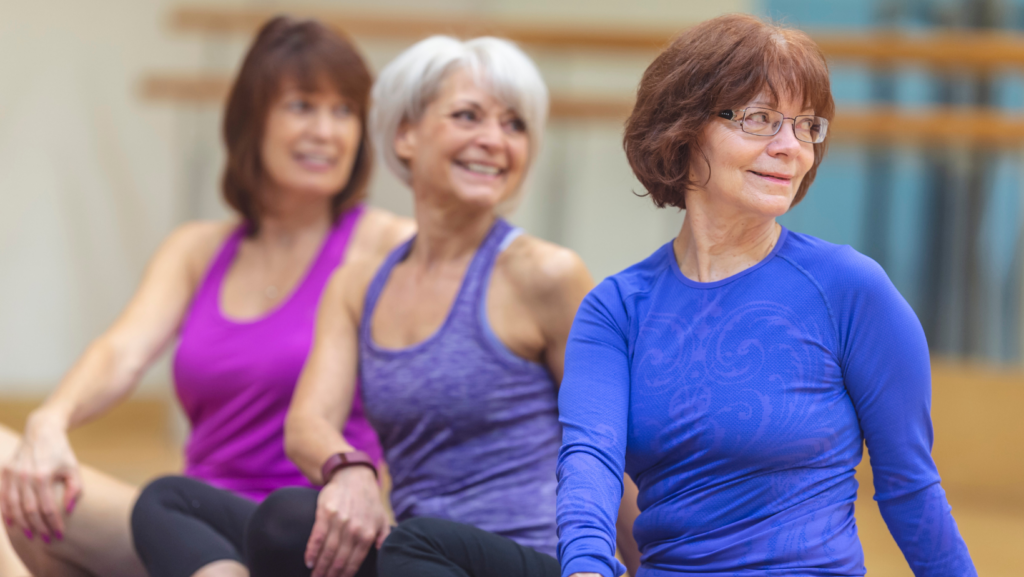
Studies have shown that regular yoga practice can lead to an increase in levels of serotonin, the mood-regulating, “feel-good” neurotransmitter.
Higher levels of serotonin help create a sense of well-being and happiness, while low levels lead to feelings of sadness and depression..
This yoga-driven increase in serotonin is thought to be due to the combination of physical activity and relaxation that yoga provides.
Yoga poses, or asanas, increase blood flow to the brain, which can help to boost serotonin levels.
Breathing exercises and meditation reduce stress and tension in the body, which can also lead to an increase in serotonin.
In addition to increasing serotonin levels, yoga can also help to regulate the stress hormone cortisol.
High cortisol levels can lead to feelings of anxiety and depression, so reducing cortisol levels helps to improve mood.
Yoga practices such as breathing and meditation help to reduce cortisol by slowing down the body’s fight-or-flight response and promoting a sense of relaxation.
Another way yoga benefits mood is by increasing the inhibitory neurotransmitter GABA (gamma-aminobutyric acid).
Meditation also reduces activity in the limbic system, the part of the brain dedicated to emotions.
By encouraging the practice of mindfulness, yoga can help you be more aware of thoughts and feelings.
Self-awareness can be helpful in managing symptoms of depression and anxiety by making you more aware of triggers and helping you develop coping mechanisms to deal with them.
Overall, yoga is a tool for improving mood.
By increasing serotonin and GABA levels, reducing cortisol levels and limbic activity, and promoting mindfulness, yoga helps to create well-being and happiness, which leads to a reduction in symptoms of depression and anxiety.
Let’s try Prasarita Padottanasana (Wide-Legged Standing Forward Bend), a specific pose to help improve mood.
When you’re in this pose, imagine stress and negative thoughts rolling off your back. This yoga pose creates space to quiet your mind, focus inward, and let go.
Let’s try it:
Make sure your feet are parallel, about 3 feet apart.
Slowly hinge at your hips as you press the inside toe and heel into the ground for strength and stability.
With an engaged core, let your head slowly drop below your heart, gently lengthening the spine.
Once in your forward fold, reach your hands to your calves or outside of the feet to deepen the stretch.
Stay here for 5 or so breaths, up to a minute.
How does yoga provide self-awareness?
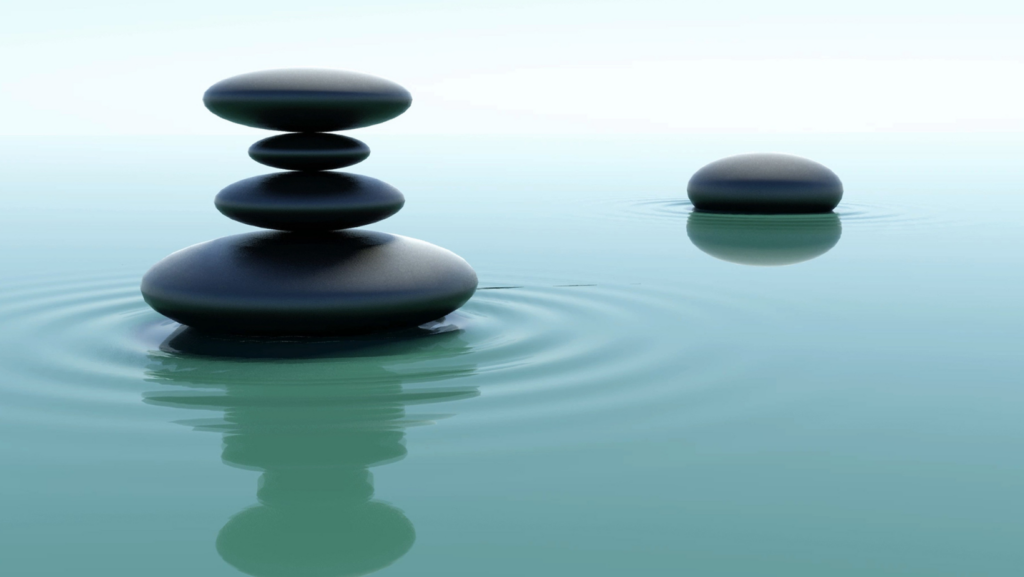
Yoga attends to every aspect of who you are – body, mind, breath, spirit, emotions.
Your entire self is engaged in the practice. And being mindful of your breath establishes you in the present moment.
Yoga is a mirror. Through yoga poses (asana) and awareness of the breath, you cultivate self-awareness.
Mindfulness is central to yoga and helps you become more aware of thoughts and feelings.
Self-awareness can be incredibly powerful in managing anxiety and depression.
Acting without it is akin to sleepwalking, leading you to act on impulse, with your mind controlling you instead of you controlling your mind.In contrast, when you act with awareness, you have more agency with your mind. Your senses are clear. You can perceive, see, think, and hear better.
When you’re present on your yoga mat, you’re nonjudgmentally aware of every part of your body. You feel your body in each pose. When you breathe, you feel air filling your lungs.
You’re curious about the splendor of your inner workings!
How does Yoga help you sleep better?
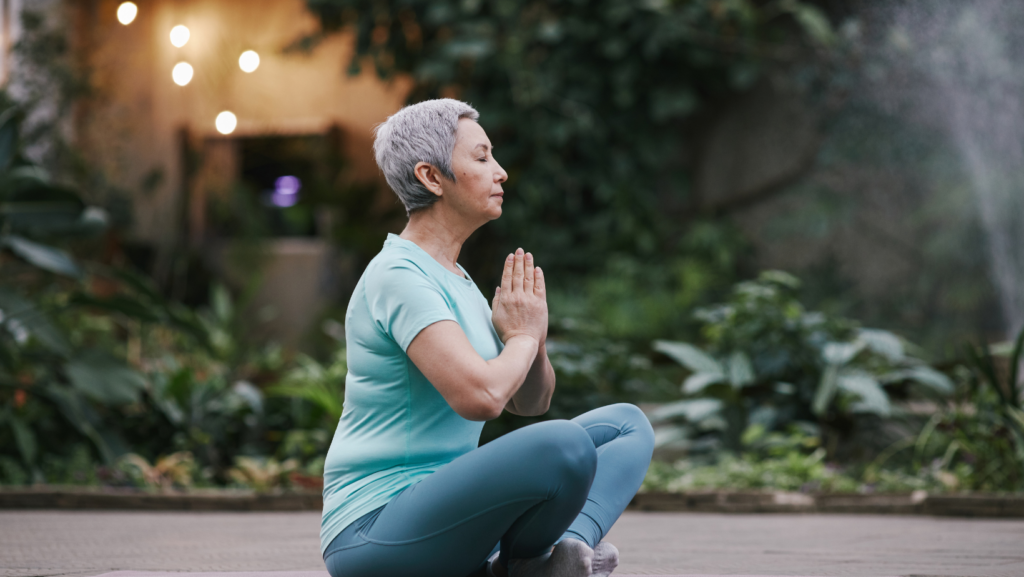
Yoga is a gateway to restful sleep, an important key to managing anxiety and depression symptoms.
Sleep is essential for overall well-being, and, when you don’t get enough, symptoms worsen.
Is yoga inclusive?
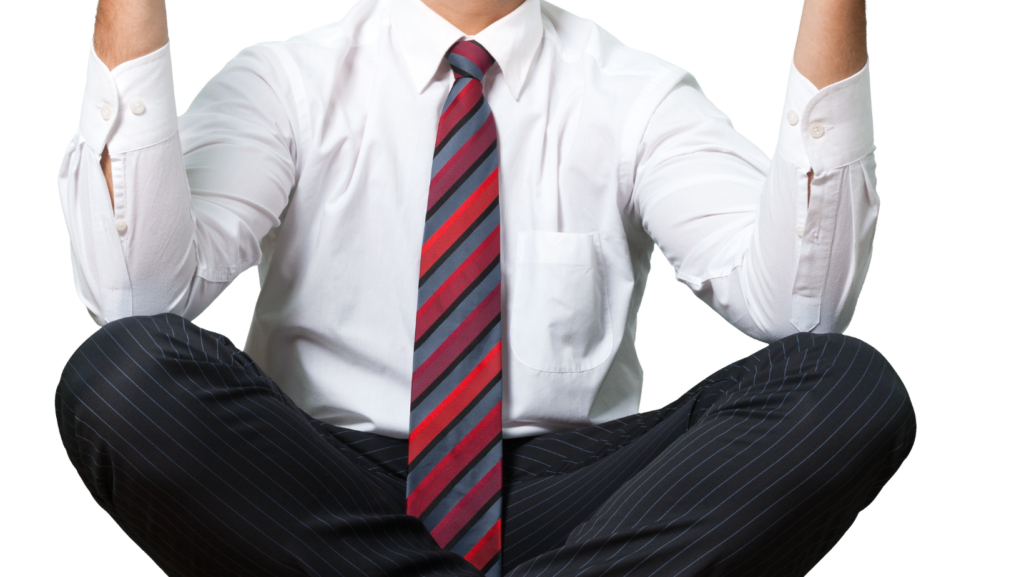
Yes! Yoga can easily be modified for different abilities, so it is accessible to a wide range of people.
It can also be practiced in different kinds of settings, from studios to homes, which makes it easier to incorporate into daily life.
Jigar Gor reminds us that yoga “is not about touching your toes. It is what you learn on your way down.”
Yoga can be an incredibly powerful tool, especially if you’re struggling with depression and anxiety.
The combination of physical movement, mindfulness, and breath helps to redirect your energy from what doesn’t serve you to what does.
Practicing yoga is a way to access inner-peace and tranquility by offering a time-out from the turbulence that can accompany anxiety or depression.
Savasana, also known as Corpse Pose, is the final resting pose.
In this pose, you lie down on your back and relax both body and mind. Your intention is to fully integrate the benefits of the entire asana practice.
As yogi Erich Schiffmann says, “Savasana is the essence of yoga made simple: going within and experiencing yourself.”
Yoga really is not about making yourself into a pretzel, competing with the person on the mat next to you, or wearing fancy yoga pants.
If you are interested in starting a yoga practice, good for you! Please consult with a healthcare professional before starting.
Inspired to try yoga for its physical benefits or yoga for anxiety and depression? Whatever your motivation, be sure to practice under the guidance of a trained instructor.
And be sure your practice is tailored to your abilities.
This is your practice, designed to serve your life.
Dr Elayne Daniels is a private practice psychologist, international consultant, and coach. Over the last 25 years, she has helped people heal and deal with depression and anxiety. To learn more about how she might help you, contact her here.
Check out her blog articles on depression and anxiety here.


